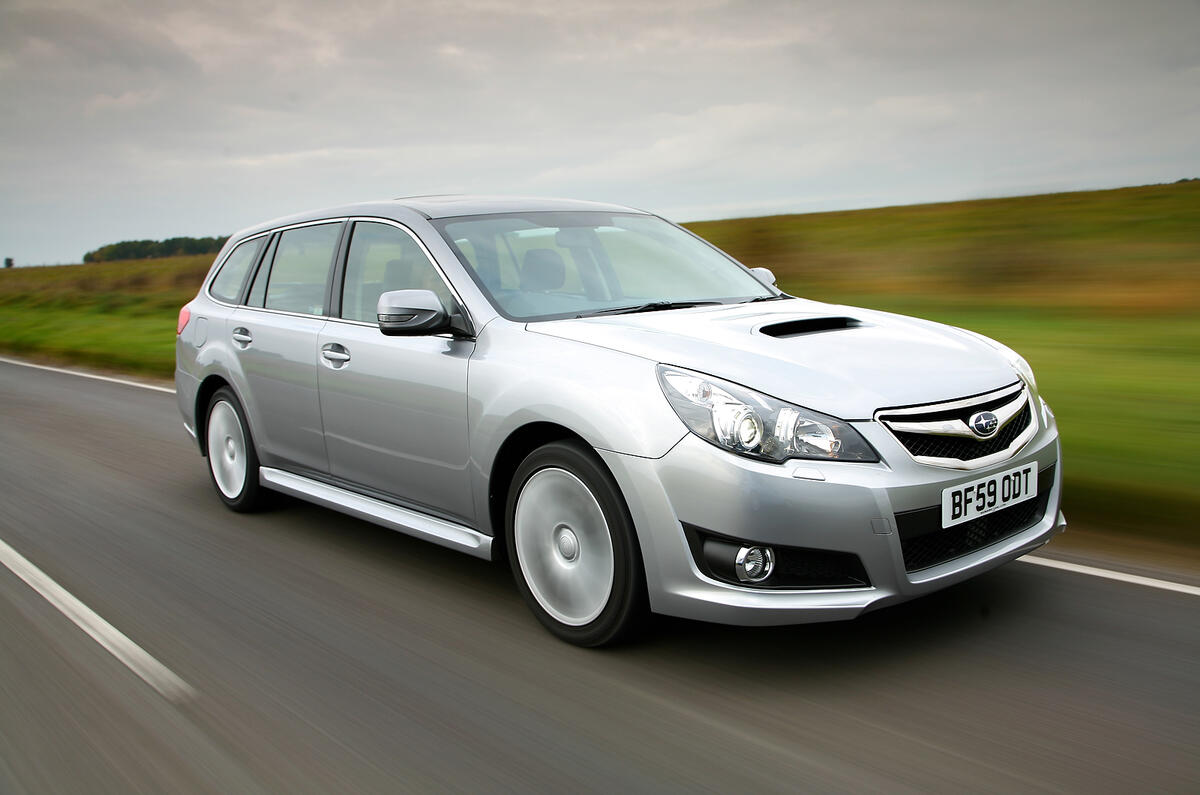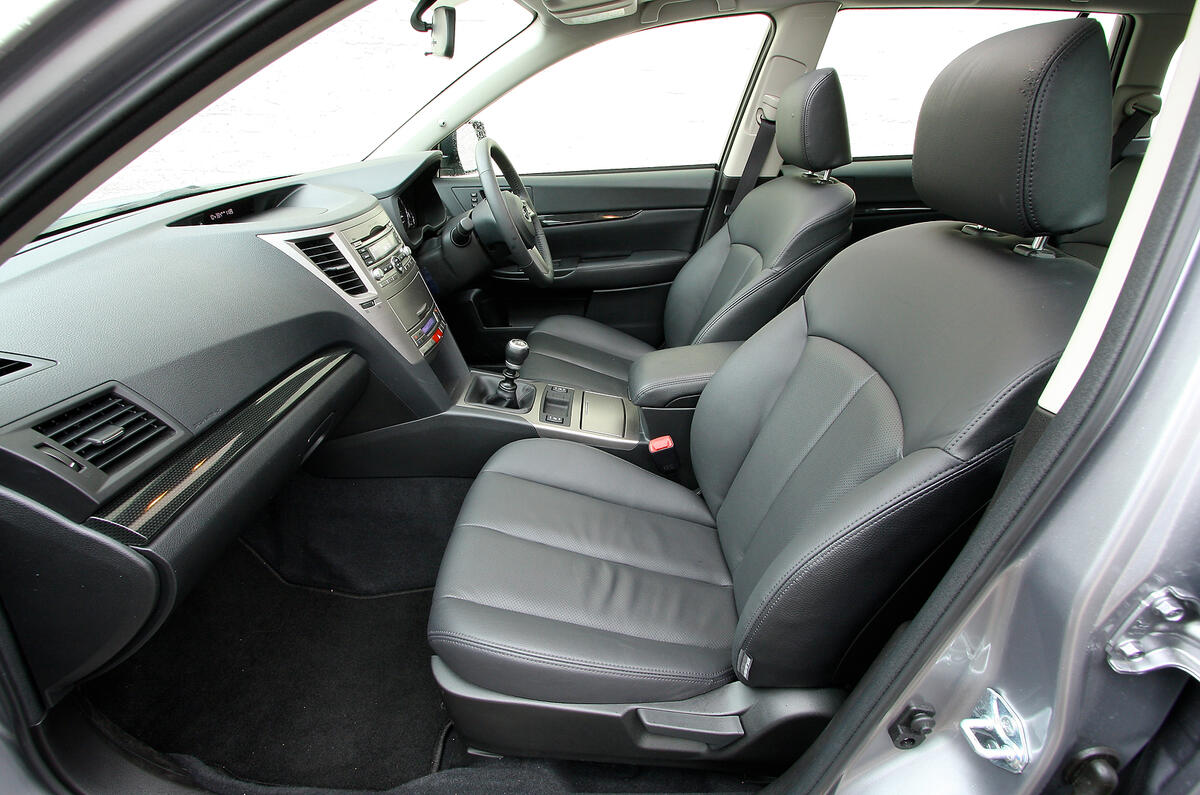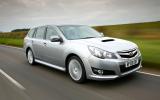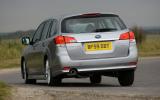The Legacy’s external dimensions are all bigger than its predecessor’s, most by around 50mm. Its wheelbase, however, has increased by 80mm to 2750mm, and this has resulted in the Subaru having one of the more accommodating cabins in its class.
There is ample head and leg room in the front, with decent space for three in the rear, too, although the centre seat is slightly compromised by the transmission tunnel. The load bay is one of the biggest in this class; it’s only slightly smaller than that of the Ford Mondeo estate, at 526 litres with the seats in place. This rises to 1726 litres with the rear seats folded, which they do with ease thanks to latches placed just inside the tailgate. The load bay floor itself is low, too, and the rear bumper unobtrusive, which eases the loading of heavy cargo.
Interior finish, however, has seldom been a Subaru strong point, and although the Legacy feels well assembled and is as free from creaks as you’d hope and expect, its surfaces and the design of the minor switches lack the finesse you’d find in even average European competition.
Ergonomically, the Legacy’s cabin is sound. The front chairs are large and there’s a big space between them; this is a wide cockpit. The dials are clear and concise, and the minor controls, even if they look a tad clumsy, operate precisely enough.
There is a refreshing honesty about the way things work, too. The headlights and wipers have automatic operation but, unlike in some cars, they don’t default to ‘on’ and can be left off, so you’ve got the choice. And although the electronic handbrake’s lever could be bigger, at least it’s simple to operate. Push the throttle and it releases; you don’t have to prod the brakes while you’re doing it.






































